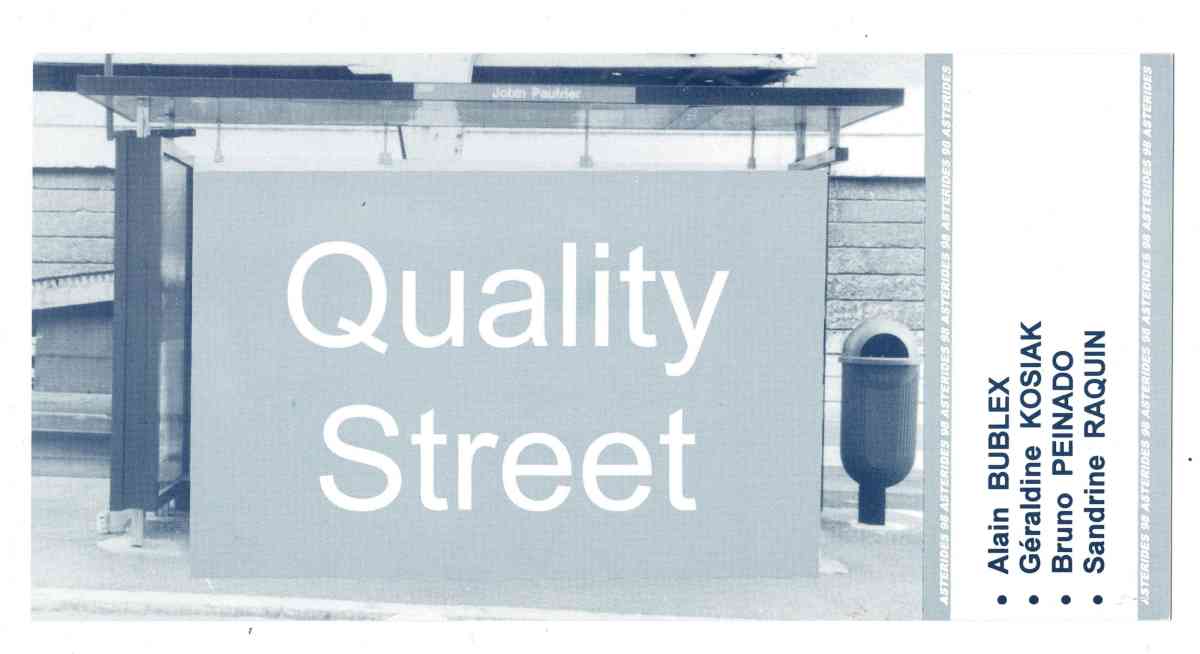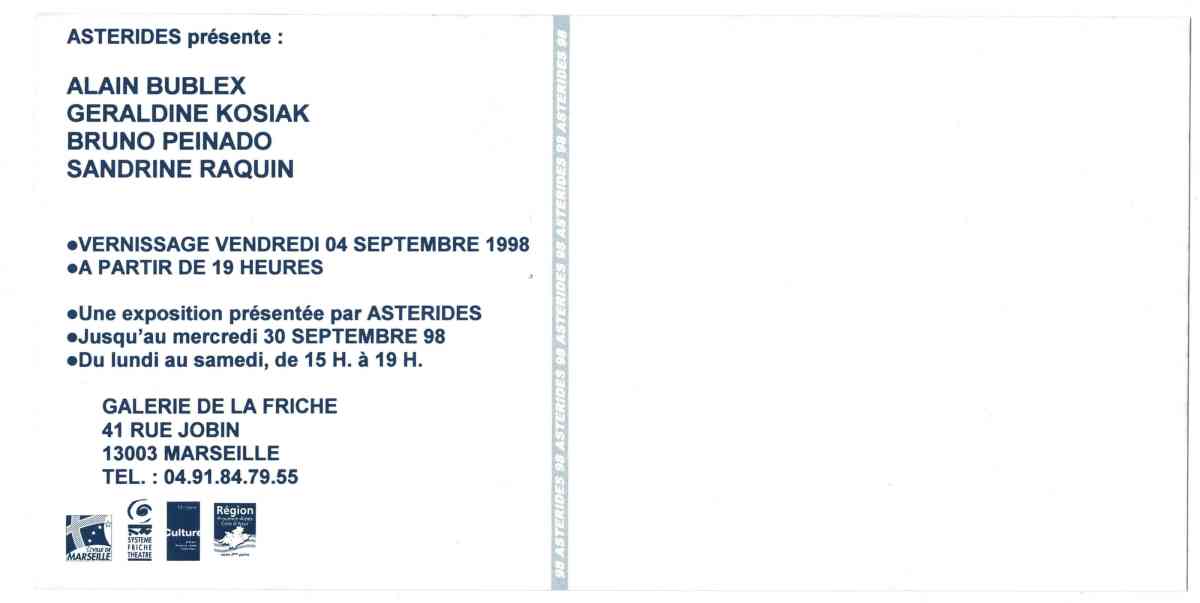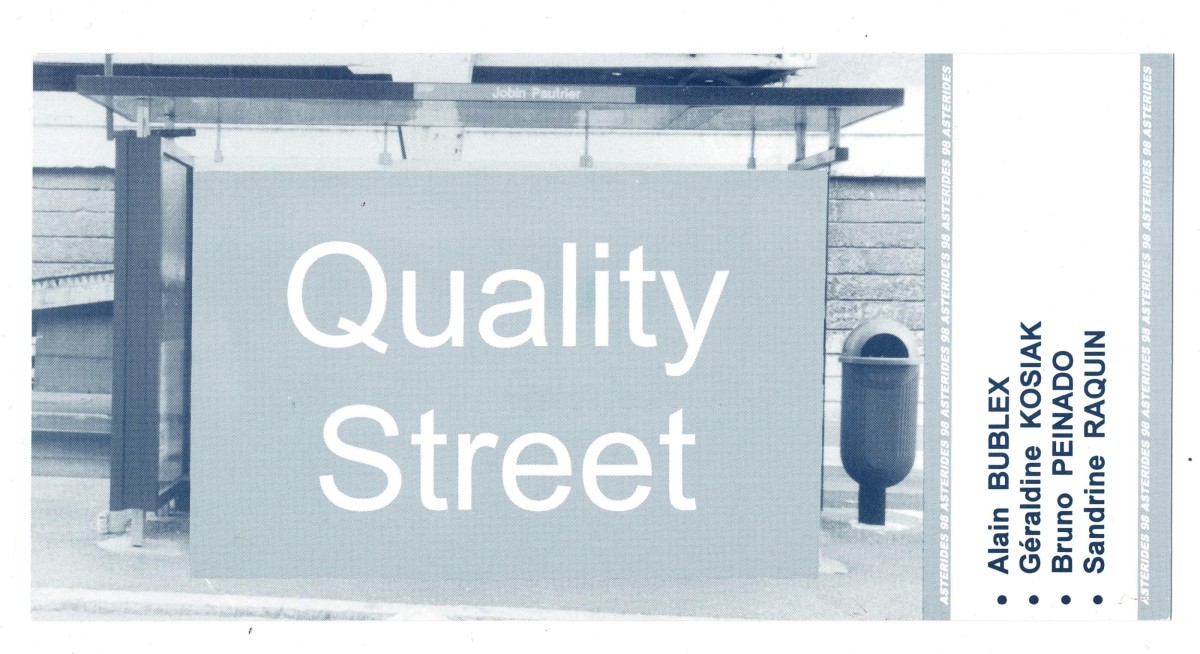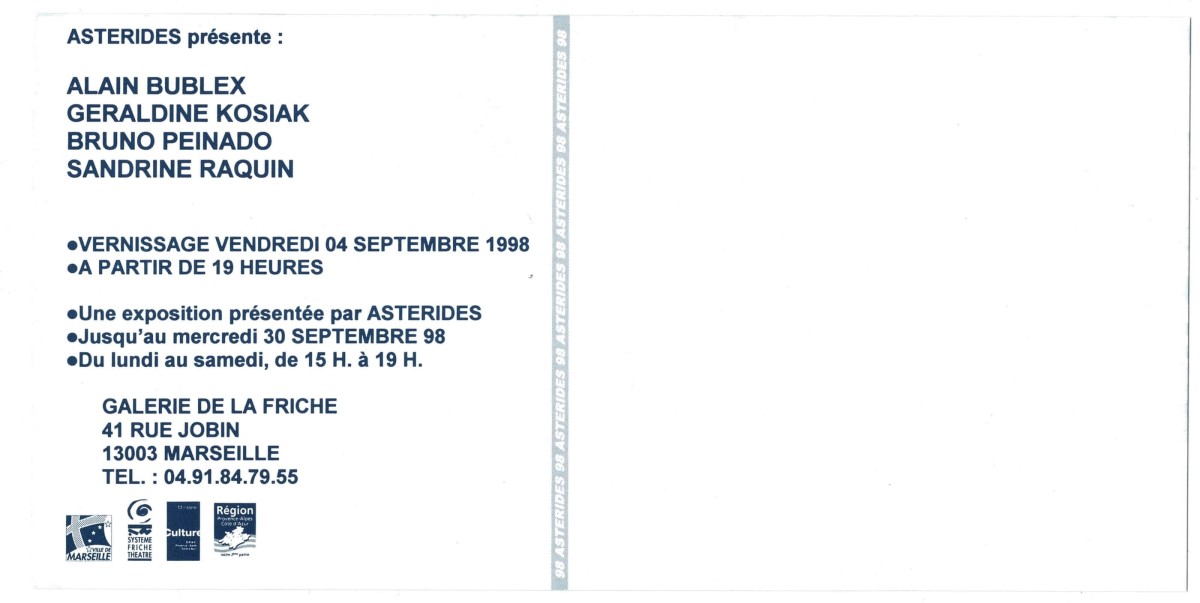Quality Street
Collective show with Alain Bublex, Géraldine Kosiak, Bruno Peinado and Sandrine Raquin
September 5 - 30, 1998
Galerie de la Friche la Belle de Mai - Marseille
Quality Street brings together four artists from Lyon or Marseille — Alain Bublex, Géraldine Kosiak, Bruno Peinado, and Sandrine Raquin — each of whom has, at some point in their work, explored spaces of circulation.
We know how topology, now elastic, allows for what is called a “global” representation. It stretches physical, political, economic, symbolic, and communicational space. Paradoxically, the spaces themselves are shrinking; it is the corridors, passageways, communication channels, routes, cables… that are now taking over the territory.
As a result, the notion of “mass” disappears, and dialectics are swallowed up by complex, multipolar systems. These “masses” become aggregates of “singularities,” which are propelled at high speed through international mega-pipelines. Politically, we know that these high-speed channels prohibit stopping, demonstration, rebellion. Economically, they accelerate consumption. Psychologically, they foster disorientation and anxiety. Symbolically, they contribute to the simplification and infantilization of signs.
Each of the four artists in Quality Street explores, in their own way, the imaginary connected to these conditions. Their approaches are decidedly critical and avoid the “nomadism” often seen as the romantic counterpart of these new topologies.
In addition to his better-known projects (Glooscap, Tentatives, or Aérofiat), Alain Bublex photographs landscapes of great banality. Their only shared characteristic is that they are located in territories conquered by the Front National — city, municipality, or region. These landscapes remind us, beyond the spread of a social gangrene, that ordinary fascism, in its infiltrating phase, is discreet, even transparent — in a word, “normal.” Gradually, these photographs (which some might mistake for postcards) weave a chilling network of democratic failure.
Géraldine Kosiak photographs highways under construction. These documents do not serve as memory and, unlike Berlin photography, do not question history. Placed side by side, they evoke instead, in their multiplicity, the iterative sweeping of the gaze across the landscape. Their very small size, by eliminating detail, reveals a simple, bipolar universe — earth and sky, ochre and blue. This binary form of visual writing contributes, through long sequences of small photographs, to the creation of a perpetually reconstructed space, the meaning of which eludes us.
This notion of disorientation is also found in her drawings of insect trajectories, termite mound or ant colony cross-sections. Taken from entomology manuals, these drawings are stripped of all information. Devoid of educational content, the insects trace obscure paths, somewhere between the aesthetics of video game maps and mysterious city plans.
Sandrine Raquin’s work, taken as a whole, resembles a small statistical factory, regularly producing reports on the world, seeking relationships or meaning in the most unexpected folds of daily life. In the installation she presents in this exhibition, she explores four ways of traveling from one point to another. The itinerary is very ordinary and, significantly, offers no inherent perspective. The interest in the journey lies in the moments of circulation.
Bruno Peinado’s mental space would take the form of an archipelago. Like many contemporary artists, his “chaosmotic” way of thinking stands increasingly in opposition to the archaic models of Western centralism and continentalism. Understood as an artistic process, it yields neither a finished product nor a definitive truth. It does not seek autonomy, but “inscribes itself in a much broader network that ultimately encompasses the totality of beings.”
The work presented at the Galerie de la Friche is unmistakably fragmented. Rather than a singular artwork, one finds a mesh of scattered debris, signs, and desires. Taken as an object, this space is unfathomable. One must enter it, wander through it, investigate it — in the sense of both a police investigation and scientific research. One might rediscover the archipelago, move from island to island, pause there, or patiently reweave the whole. It depends.



